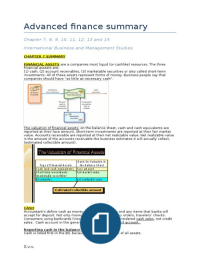Samenvatting
Summary Advanced Finance ch. 7,8,9,10,11,12,13 and 14 (BEST SELLER)
Advanced finance and accounting summary ch. 7,8,9,10,11,12,13 and 14, this summary is definitely worth its money, easily to understand the content and pass the exam
[Meer zien]





